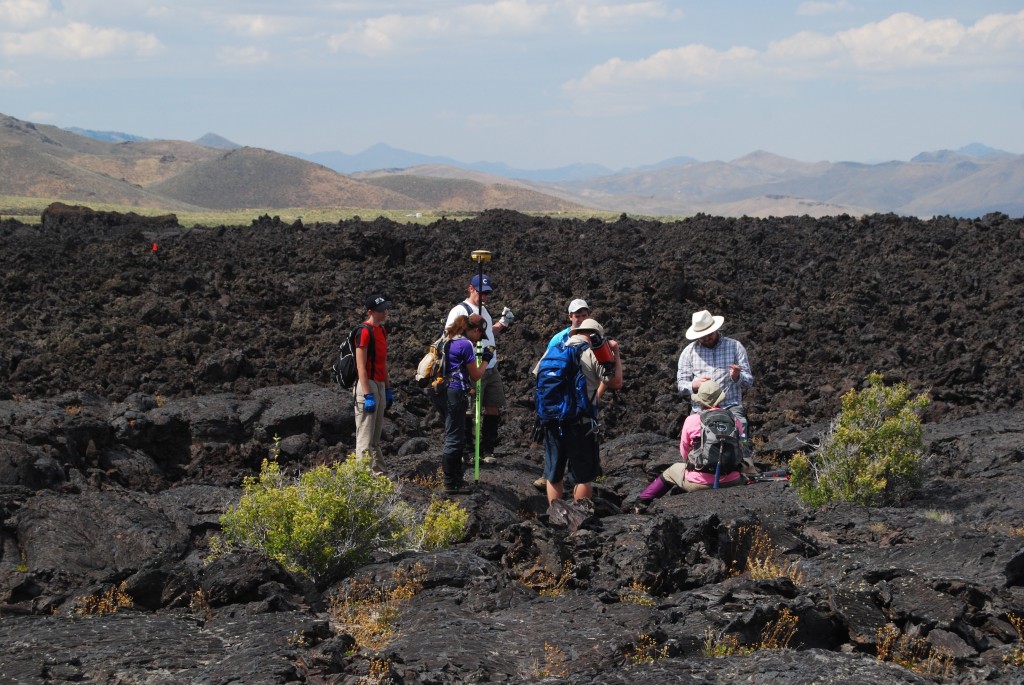Idaho State University/NASA have successful field season at Craters of the Moon National Monument and Preserve to study planetary exploration, volcanic analogues
September 3, 2015
POCATELLO – Idaho State University researchers working with NASA on two projects – one looking at space exploration and the other focused on studying living organisms in volcanic environments – completed a successful field season this year at the Craters of the Moon National Monument and Preserve and other volcanic areas in eastern Idaho.
The projects that ISU is working on with NASA and other partners are:

Shannon Kobs Nawotniak)
• NASA “Biologic Analog Science Associated with Lava Terrains” (BASALT) project, a study over the next four years on how microbial, or minute life forms such as bacteria or viruses, evolve on lava flows in Idaho and Hawaii. The ISU researchers are studying how biological organisms take a hold on substrates in volcanic terrains in an effort to understand how life could have possibly originated on other planets such as Mars.
These two projects together have brought in about $900,000 in grant funds to ISU and this summer’s fieldwork received widespread media coverage this August.
“The importance of FINESSE research is to understand how these systems work on this planet in so much detail that we will be able to assess similar features on other planets,” said Scott Hughes, ISU geosciences professor emeritus and a co-principal investigator on this grant.
“On other planets we see lava flows, volcanoes, all sorts of volcanic features and we see the same kinds of features here,” Hughes continued, “We want to use this effort to enhance the way we explore other planets and perhaps to even help make some decisions regarding planetary rovers, probes, on-site analysis and so forth.”
ISU helped with the testing of very specific field equipment this summer.

Those on-the-ground transects were complemented by some surveys done by NASA and other partners using Unmanned Aerial Vehicles.
“We are expanding as we go from small locations to larger locations,” Nawotniak said. “Over the next several years we will doing the same kinds of things, but with different types of features. We are working from all scales. We are trying to look at these things from a planetary scale all the way down to the sub-microscopic scale.”
Besides Nawotniak and Hughes, three ISU graduate and two undergraduate students were active in the fieldwork this summer.
“We really had an excellent team out there,” Nawotniak said. “It was just phenomenal, people working incredibly hard with focus. It is really hard to get this many people focused on a group goal every day for two weeks, but our team pulled through.”
The ISU researchers brought back samples to study.
“We collected samples across all these different zones that we were able to analyze in the field and we’ve brought back samples to be able to do full analyses in the lab,” Nawotniak said. “We are going to have these students working so hard the next nine months. Until they are able to go out in the field again they’ll be crushing rocks, cutting rocks, putting them through various sensors, to counting micro crystals in the microscope.”
Categories:
